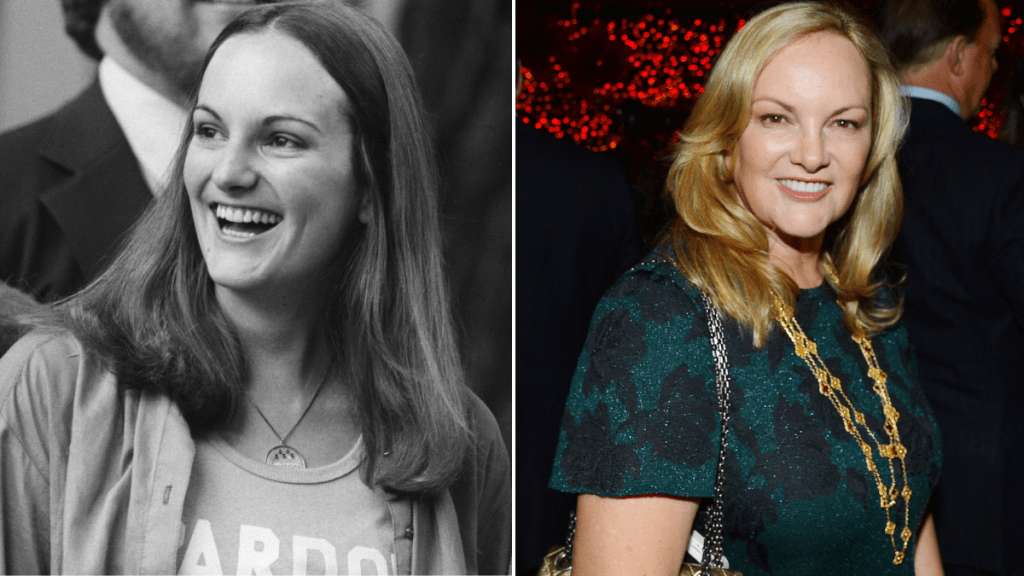Where Is Patty Hearst Now? The Heiress's Life After Kidnapping
How does a young heiress, snatched from the familiar comforts of her privileged life, transform into a figure of both notoriety and enduring fascination? The story of Patricia Hearst, a name synonymous with kidnapping, radicalism, and resilience, continues to captivate, offering a complex tapestry woven with threads of coercion, celebrity, and the enduring human spirit.
Patricia Hearst, now known as Patricia Hearst Shaw, turned 69, and her life has been anything but ordinary. Her journey began in the glare of public attention in 1974, when she was abducted by the Symbionese Liberation Army (SLA), a self-proclaimed revolutionary group. Her kidnapping became a media sensation, quickly evolving into a saga that would define her for decades. Her captors, driven by radical ideologies, held her for a period, and the consequences of her captivity would shape the rest of her life. The narrative is marked by a series of dramatic events, from her initial abduction, to her controversial involvement in crimes with the SLA, and her eventual trial and imprisonment.
The world watched in disbelief as the heiress seemingly embraced the cause of her captors, participating in bank robberies and other acts of violence. This dramatic shift, a product of her captivity and the pressures she faced, became a central question in the ongoing debate surrounding her. What factors led her to this point? Were her actions a reflection of genuine belief, or the desperate choices of a victim under duress? The circumstances surrounding her transformation have been explored and debated by historians, journalists, and the public. The saga continues to fascinate, and it remains a central aspect of her life story.
Following the period of her captivity and the subsequent legal proceedings, Hearst attempted to rebuild her life. She married Bernard Shaw, a police officer who had served as her bodyguard while she was out on bail, and embarked on the path of personal healing and re-integration into society. This transition marked a period of reflection and a slow embrace of normalcy. In the years that followed, Patricia Hearst Shaw has sought to define herself beyond the headlines, navigating the challenges of a life permanently marked by the events of the 1970s.
The case is not without its complexities, and it continues to spark intense debate. Did she act under duress, or was she an active participant in the group's activities? These are the questions that have fueled a multitude of books, documentaries, and investigative pieces over the years. The details of her life story, from her upbringing in a wealthy family to the tumultuous events of her kidnapping and the trials that followed, offer a complex and captivating study of human nature. The narrative is a unique blend of privilege, trauma, and resilience. As the years have passed, this tale of a young woman caught in extraordinary circumstances has grown to become a definitive example of how circumstances can change a person's life.
The legal battles continued. Convicted in 1976, she was sentenced to prison. Later, after serving time, she was released. The legal system, too, played a crucial role in her life story. In 2001, the ultimate decision of her case was made in the form of a pardon.
The enduring public interest in Patricia Hearst is fueled by her connection to a major media dynasty. The heiress to the William Randolph Hearst media empire, her life has been perpetually viewed through the lens of fame and wealth. The wealth and notoriety of her family brought with it both privilege and intense public scrutiny. The kidnapping brought her to the forefront of media attention, transforming her into a symbol of the era. Fifty years after her abduction, the case continues to provide a look into the intersection of celebrity, political radicalism, and human resilience. The subject has always been the object of study and continues to be a source of interest.
The story of Patricia Hearst is a reminder that even amidst the most challenging circumstances, the human spirit can find a way to endure and seek a semblance of peace. The drama provides lessons that will be studied for a long time to come.
| Category | Details |
|---|---|
| Full Name | Patricia Hearst Shaw (ne Hearst) |
| Date of Birth | February 20, 1954 |
| Age | 69 years old |
| Family | Granddaughter of William Randolph Hearst; Married to the late Bernard Shaw |
| Known For | American heiress, former member of the Symbionese Liberation Army, subject of kidnapping and legal trials |
| Key Events | Kidnapped by the Symbionese Liberation Army in 1974; Convicted in 1976; Pardoned in 2001 |
| Current Life | Living a private life, focusing on family |
| Notable Works/Appearances | Subject of numerous books, documentaries, and media coverage |
| Marital Status | Widowed |
| Residence | Information not publicly available |
| Website Reference | Encyclopedia Britannica |
The complexities surrounding Patty Hearst's story continue to make her an intriguing figure. Many ask the question, "Where is Patty Hearst now?" After the dramatic events of her past, and the attention that followed her, she has chosen to live a private life. She married her bodyguard, Bernard Shaw, months after her release, and they remained together until his death in 2013. The couple met at San Francisco's Top of the Mark restaurant in 1976, after she was released on $1.5 million bail pending an appeal.
The case continues to fascinate. One of the reasons for the intense attention is the extraordinary details of her kidnapping. Few kidnappings are as infamous, or controversial, as Patty Hearst's. The ordeal quickly became a media spectacle, and its impact on society would be profound. The kidnapping and the subsequent events, including her involvement with the SLA, have sparked endless debate, and have been the focus of countless books, films, and documentaries. The transformations of Patty Hearst from a wealthy heiress to a member of a radical group and then her attempts to reclaim her life continue to captivate and divide opinion.
The legacy of the Hearst kidnapping remains a subject of discussion and re-examination. The details of her transformation have come to represent the story of a radical transformation. Its a story that has been viewed and re-viewed over the decades. Over forty years later, firsthand accounts shed light on the events, and the saga continues. The wild saga of the kidnapping, crimes, and trials of Patty Hearst is the subject of Jeffrey Toobins new book, America Heiress. The story highlights the complex social issues.
The events in the life of Patty Hearst are a reminder of the enduring nature of human resilience. The life of Patty Hearst Shaw is a testament to the enduring nature of the human spirit. She is now known as Patricia Hearst Shaw after she married a police officer who guarded her when she was out on bail. The narrative is a reminder of the power of celebrity, privilege, and violence.
Hearst will turn 70 on February. Fifty years ago, the granddaughter of media mogul William Randolph Hearst became a household name when she was abducted by a revolutionary group known as the Symbionese Liberation Army (SLA). Her story also includes the social issues of the era. Over the years, she has sought to find a path to peace, and she continues to live in the public eye.


